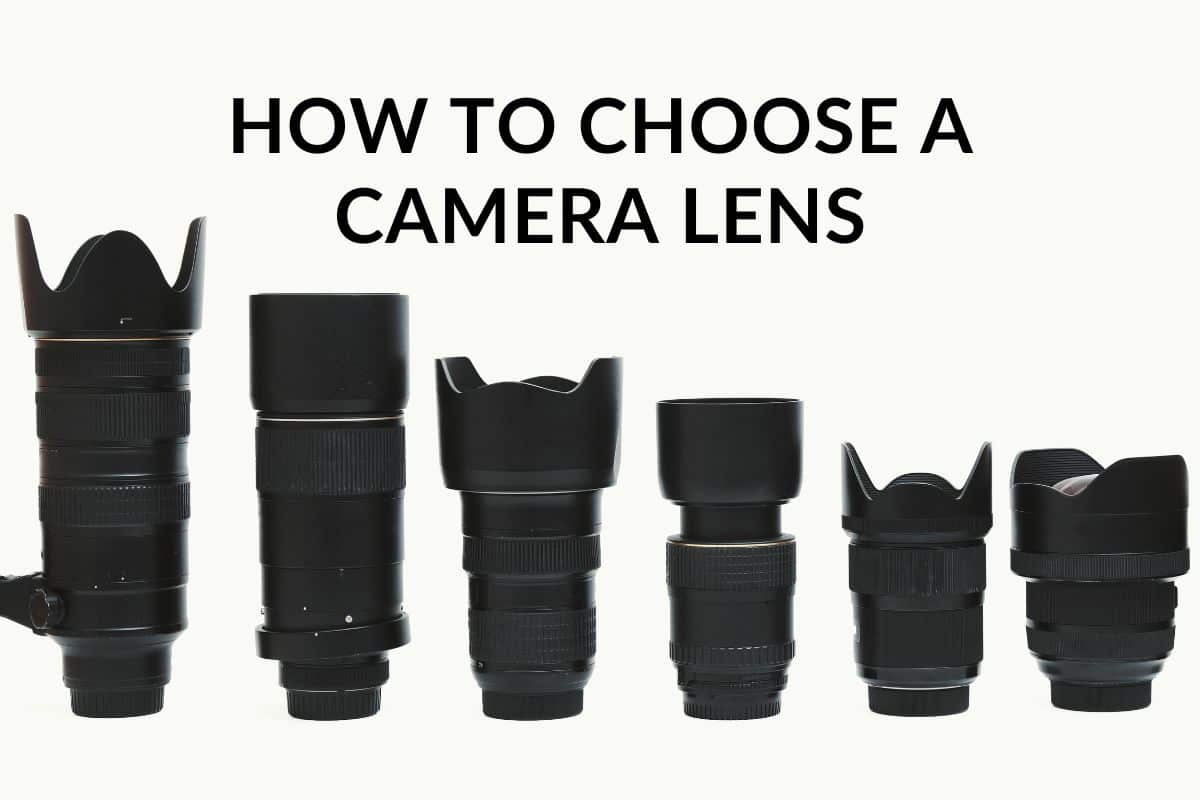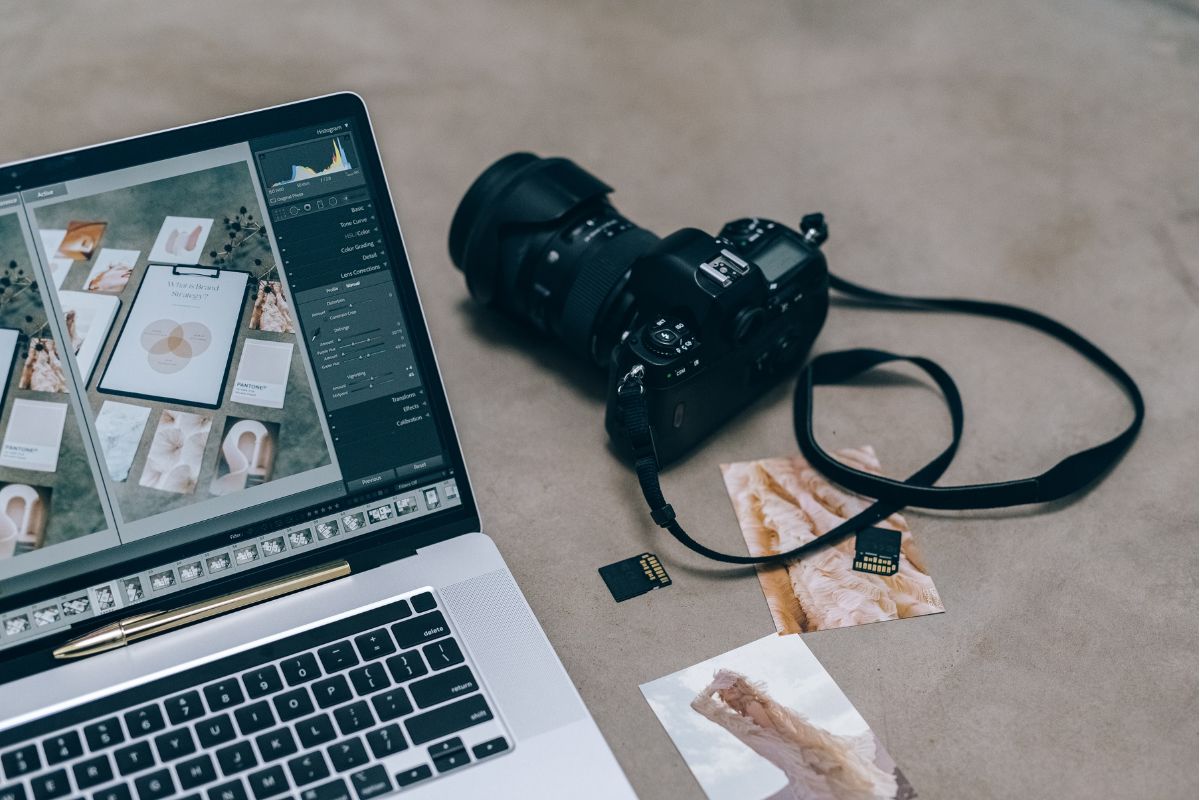Portrait photography is a form of art that captures the essence and personality of an individual or a group of people through a photograph. A captivating and visually appealing portrait requires skill, creativity, and attention to detail.
Whether you are a professional photographer or just starting, there are various portrait photography tips that you can use to improve your craft. From the importance of lighting, composition, and posing, to the use of different lenses, angles, and editing techniques, these tips can help you to create stunning portraits that capture the true essence of your subject.
This article will explore some of the most important portrait photography tips to help you take your portraits to the next level.
What is Portrait Photography?
Portrait photography is a style of photography that centers on capturing the appearance, personality, and emotions of an individual or a group. Its purpose is to capture the quintessence of a person, encompassing their character, physical attributes, and sentiments.
The objective of portrait photography is to create a remarkable picture that captures the subject’s true nature while producing a timeless visual archive of them. Photographers specializing in portraiture work alongside their subjects to create a serene and comfortable environment, allowing them to capture genuine, unposed expressions and movements.
To craft a winning portrait, a photographer must possess a sharp attention to detail and a solid grasp of composition. They should also have expertise in lighting and the ability to collaborate with their subjects to draw out their genuine beauty and individuality.
A prosperous portrait photographer should possess formidable people skills in conjunction with technical aptitude. They must establish a bond with their subjects and construct an atmosphere of ease and faith that enables them to seize the subject’s true character.
What if you are still a beginner and want better portrait results? Well, it isn’t rocket science; there are some straightforward steps, rules, and ideas to get the best out of your images. Let’s dive into these portrait photography tips for beginners.
Portrait photography tips to level up your game
1. Lighting

Lighting is an essential aspect of portrait photography that can significantly affect the outcome of the final image. A skilled photographer can harness the power of light to create the desired mood, enhance the subject’s features, and evoke a particular emotion or sentiment.
Natural light is generally preferred over artificial light in portrait photography, creating a softer, more flattering effect. For example, the warm, diffused light of sunrise and sunset can create a beautiful, dreamy quality to the photograph. The photographer can also use natural light sources like windows, doors, and reflections to create a soft and flattering illumination for their subject.
However, there are instances where artificial lighting may be necessary or desirable, such as when working in low-light photography conditions or when a particular effect is desired. When using artificial light, it is crucial to use soft light sources, such as softboxes, umbrellas, or diffusers, to create a flattering, diffused light that minimizes harsh shadows on the face.
Furthermore, a great portrait photography tip is to pay attention to the direction of the light source and the angle of the light falling on the subject’s face. Lighting from different angles can highlight or accentuate various features, and the photographer must experiment with different lighting setups to find the most flattering one for their subject.
2. Composition
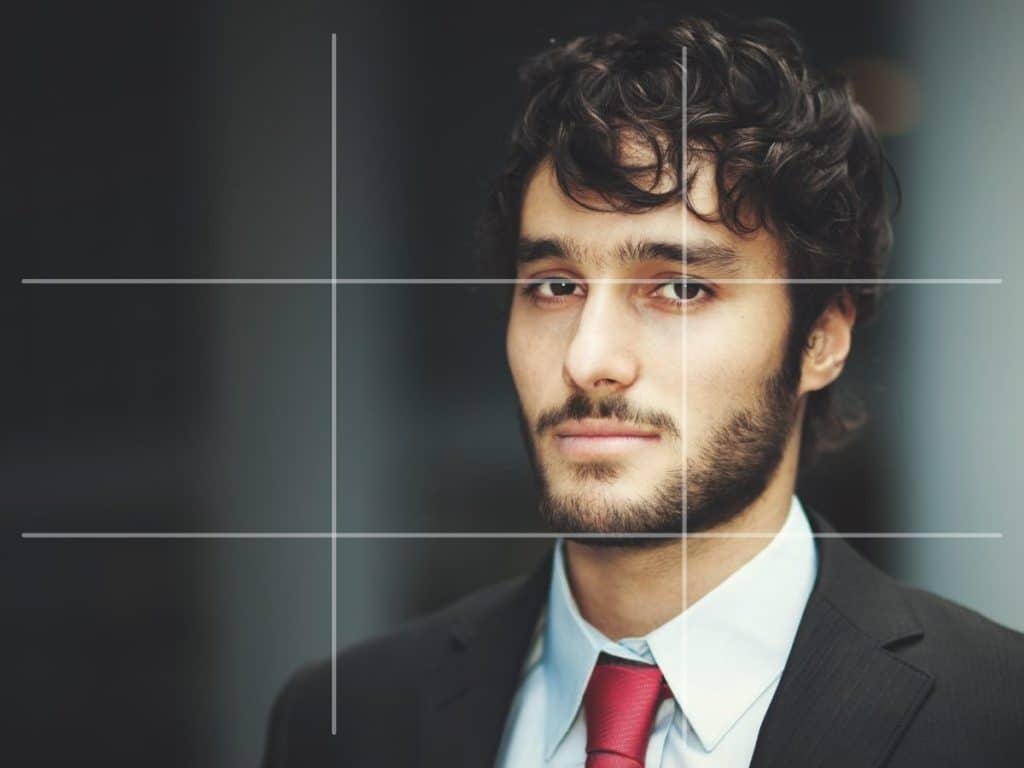
The way elements are arranged within a photograph, including the subject’s pose, their relationship to the foreground and background, and the overall balance and visual appeal of the image, is known as composition. In portrait photography, composition is critical in determining whether an image turns out good.
Portrait photographers frequently apply the rule of thirds to achieve a well-proportioned and aesthetically pleasing composition. To utilize this method, divide the photograph into thirds, both horizontally and vertically, and then position the subject at one of these intersection points. As a result, the resulting image is well-balanced and guides the viewer’s focus toward the most crucial aspect of the picture.
Apart from utilizing the rule of thirds, portrait photographers can also use diverse angles and perspectives to produce unique and compelling portraits. For example, taking shots from a low angle can give the subject a dominant or intimidating look, while shooting from a high angle can make them seem feeble or diminutive. Similarly, implementing a shallow depth of field or selective focus can result in a delightful bokeh effect that accentuates the subject and sets it apart from the background.
Read more: Portrait composition tips.
3. Pay attention to the background

It is also essential to ensure that the background does not detract from the subject but complements them. The background should not be too busy or cluttered or detract from the subject’s focus. To achieve this, photographers can use a shallow depth of field to blur the background, making the subject stand out.
A shallow depth of field is achieved by using a large aperture (small f-number), which creates a narrow depth of field. When using this portrait photography technique, the subject is focused while the background is blurred, creating a beautiful bokeh effect. This effect helps to direct the viewer’s attention to the subject and separates them from the surroundings.
In addition to using a shallow depth of field, portrait photographers can use various other techniques to create a suitable background for their subjects. For instance, they can shoot against a plain wall, use a simple and clean background, or add texture or patterns to the background. The choice of background will depend on the photographer’s creative vision and the subject’s style and preferences.
Ultimately, the background should complement and enhance the subject’s features, mood, and personality rather than distract from them. By carefully considering the background, portrait photographers can create a cohesive and visually appealing portrait that captures the essence of their subject.
4. Focus on the eyes
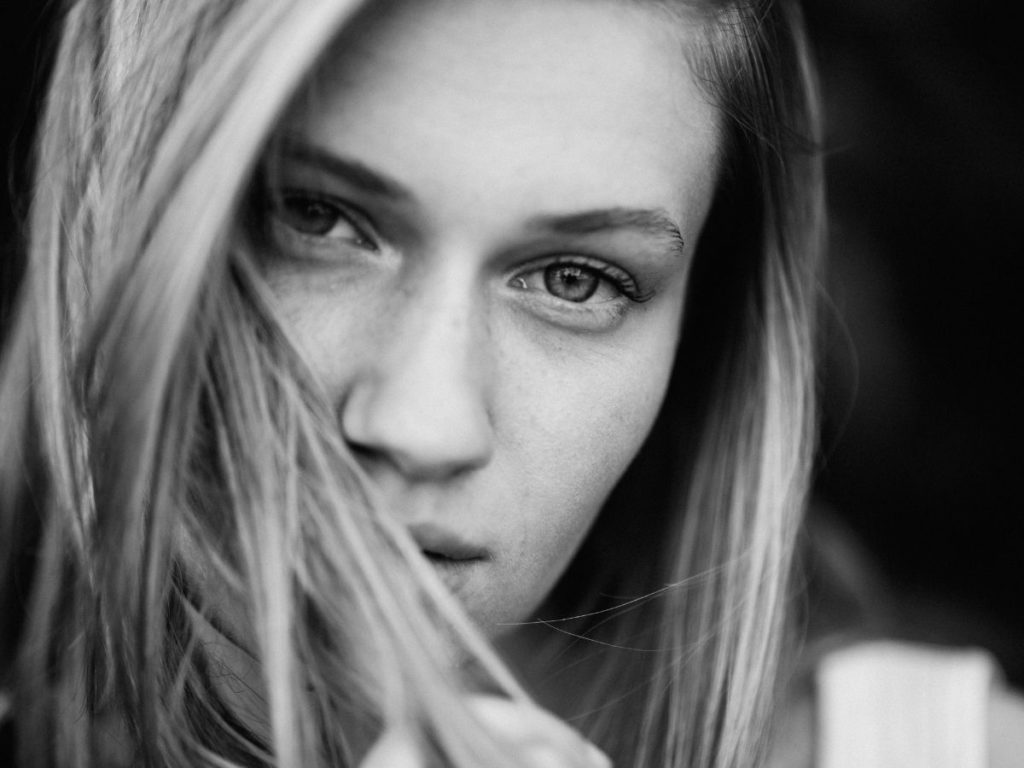
The eyes are often referred to as the “windows to the soul” and can convey a lot of emotion and personality in portrait photography. As such, ensuring that the eyes are in focus and sharp in the final image is essential. One way to achieve this is by using a single autofocus point on the subject’s eyes, ensuring that they are the image’s focal point.
A wide aperture can also help create a shallow depth of field, blurring the background and making the eyes stand out. This technique draws the viewer’s attention to the subject’s eyes, emphasizing their importance in the image. Additionally, it can help to eliminate distractions in the background, allowing the subject to be the sole focus of the photograph.
When working with a subject, it’s important to direct them to look directly into the camera lens, making their eyes appear more engaged and connected with the viewer. By capturing the eyes with sharp focus and emphasizing their importance in composition, portrait photographers can create captivating and emotionally compelling images.
5. Get to know your model
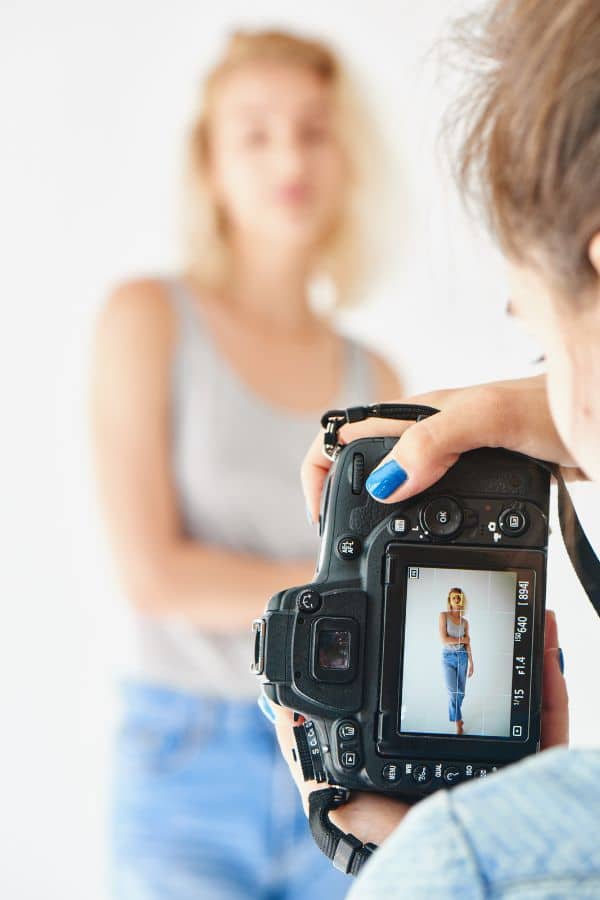
Establishing a comfortable and relaxed environment for your subject is crucial in capturing authentic and natural expressions in portrait photography. One way to achieve this is by getting to know your subject and conversing with them. This allows you to build a rapport with them, establish trust, and create a connection that translates into the images.
During the conversation, making the subject feel comfortable and confident is essential. Encourage them to be themselves and express their personalities through their poses and facial expressions. Provide clear instructions on what you want them to do and allow them the freedom to move and express themselves.
It is also essential to consider the subject’s comfort during the photoshoot. Provide a comfortable space to sit or stand, and check in regularly to ensure they are not tired or stressed. Doing so can create a positive and enjoyable experience for your subject, resulting in more natural and authentic portraits.
6. Choose the right lens
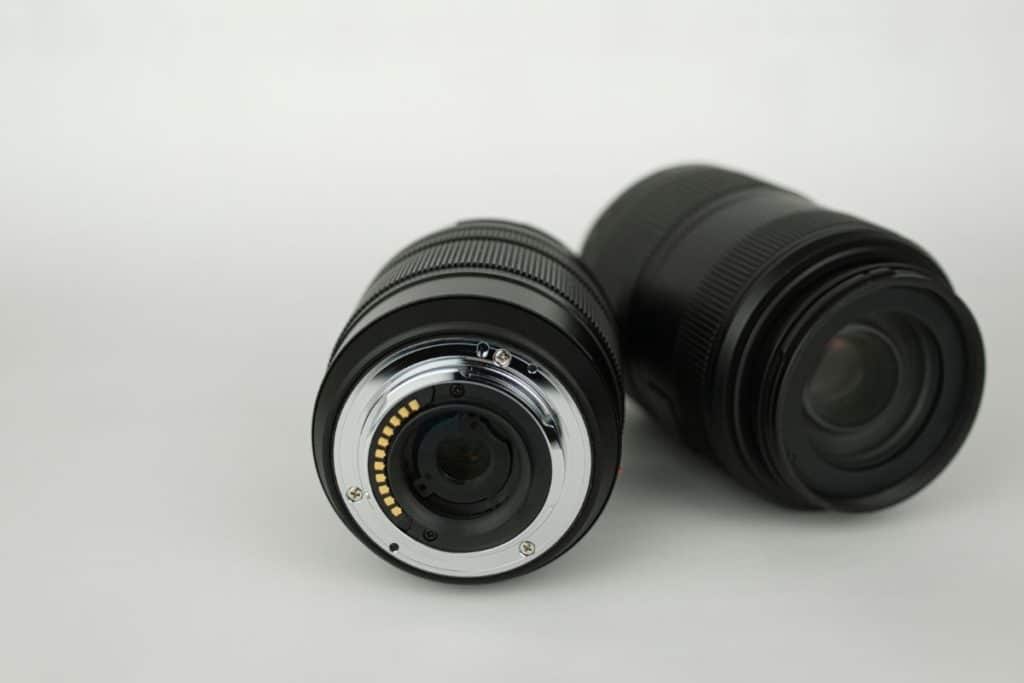
A lens is an essential tool in portrait photography as it affects the overall look and feel of the image. A lens with a wide aperture, such as a 50mm or 85mm lens, can create a shallow depth of field, resulting in a blurred background that makes the subject stand out. The bokeh effect produced by a wide aperture lens can also be pleasing to the eye and add to the overall aesthetic of the photo.
A 50mm lens is considered a standard lens for portrait photography, while an 85mm lens is often favored for headshots and tighter portraits as it produces a more natural-looking image. The longer focal length of the 85mm lens can also create a more flattering perspective and compress the subject’s features, making them appear more proportional and attractive.
It’s important to note that different lenses can have varying effects on the subject’s appearance, such as distortion or elongation of facial features. Therefore, it’s essential to experiment with different lenses to find the right one for the desired effect and to achieve the best results in portrait photography.
Read more:
Best lenses for portraits.
How to Choose a Camera Lens That Fits Your Needs.
7. Use different angles

Experimenting with different angles and perspectives can add visual interest and variety to your photos. Shooting from above or below your subject can create a unique and intriguing look that adds depth and dimension to the image.
Shooting from above, for example, can make the subject appear smaller or more vulnerable, while shooting from below can create a sense of power or dominance. It can also make the subject appear taller and more imposing, useful when photographing athletes, models, or actors.
Another angle to consider is shooting from the side, which can create a dynamic and engaging composition. This can add interest to your image by showing different textures, angles, and lines, and highlighting other parts of the subject’s face or body.
Ultimately, the key is to experiment with different angles and perspectives to find what works best for your subject and the overall aesthetic you want to achieve. Don’t be afraid to try new things and take risks to create unique and compelling portraits.
8. Pose your subject

A good pose can highlight the subject’s best features and convey their personality and mood, while a lousy posture can make them look awkward or unnatural. It’s important to remember that everyone is different, so there is no one-size-fits-all approach to posing. As a photographer, it’s your job to help your subjects feel relaxed and comfortable and to pose them in a way that flatters them.
You may want to experiment with different positions and angles to find the best pose for your subject. Ask your subject to move around and try different poses, such as sitting, standing, or leaning against a wall. You can also experiment with different levels, such as shooting from above or below your subject, to create a unique and eye-catching image.
When posing, it’s essential to consider your subject’s body language and facial expressions. Ensure they are relaxed and at ease, and try to capture natural and authentic expressions. You can also direct them to look at different points, such as the camera or off to the side, to create various images.
Finally, it’s important to remember that posing is a collaborative effort between the photographer and the subject. Don’t be afraid to ask for their input and feedback. Work together to find the best pose that showcases their personality and style.
9. Pay attention to the details

The color, texture, and style of clothing can all affect the mood and tone of the image. Consider the subject’s personality and the intended message of the portrait when choosing a dress. Ensuring the clothing fits well and is clean and wrinkle-free is also essential.
Jewelry can add an extra touch of personality and style to a portrait. However, it is essential to ensure it doesn’t overpower the image or distract from the subject. Choose jewelry that complements the clothing and is appropriate for the occasion.
Makeup can enhance the subject’s natural features and create a polished and professional look. When applying makeup, it’s essential to consider the subject’s skin tone and lighting conditions. Aim for a natural look that doesn’t detract from the subject’s beauty.
In summary, paying attention to small details such as clothing, jewelry, and makeup can elevate a portrait and make it more impactful. Considering these elements and ensuring they are in place will help create a cohesive and visually appealing portrait.
10. Use props

Props can be used creatively to add depth, context, and personality to the image. However, it’s essential to use props sparingly and ensure they don’t overpower or distract from the subject.
When choosing props, think about the story you want to tell and the message you want to convey. For example, a musician might be photographed with their instrument or a chef with their favorite cooking tool. Props can also be used to add visual interest, such as a hat, scarf, or umbrella.
It’s crucial to remember that the props should complement and enhance the overall composition, not overpower it. The subject should still be the main focus of the image.
Additionally, props can create a sense of scale or add a sense of environment or mood to the portrait. For example, photographing a person reading a book in a cozy chair or standing in front of an iconic landmark can add depth and character to the image.
Overall, using props in portrait photography can be an excellent way to add interest and personality to the image. However, using them thoughtfully is important, ensuring they don’t take away from the subject’s importance.
11. Edit your photos

Even the most well-captured images can benefit from some editing to improve their quality. Editing software like Adobe Photoshop or Lightroom can help photographers adjust various elements of their images, such as brightness, contrast, saturation, and color balance.
In portrait photography, the goal of editing should be to enhance the image while keeping it natural-looking. Avoid over-editing, which can lead to unrealistic and artificial-looking portraits. The goal is to create a professional-looking image that still maintains the natural essence of the subject.
One of the essential adjustments to make during editing is to ensure that the skin tone looks natural. Skin tones can appear overly saturated or pale in photographs, and adjusting this can make a significant difference in the final image. In addition, adjusting the brightness and contrast can help to make the image look more vibrant and eye-catching.
Another editing technique that can enhance the portrait is to blur the background. Photoshop’s tools, such as the Gaussian Blur filter, can achieve this effect. Blurring the background can help to make the subject stand out and draw attention to their face.
Overall, editing should be done with care and attention to detail. With the right adjustments, editing can help to transform an already great portrait into an exceptional one.
12. Don’t be afraid to experiment

Portrait photography is an art that requires a lot of experimentation to find your personal style and creative voice. There are no set rules, and what works for one photographer may not work for another. Therefore, trying different techniques, poses, and lighting setups is essential to see what best suits you and your subject.
For example, you might find that using a reflector to bounce light onto your subject’s face produces better results than using a flash. Or, you might discover that certain poses work better for specific body types or personalities. Additionally, you may find that a particular editing style, such as black and white or a warm filter, uniquely enhances your images.
Experimenting with different techniques and setups can also help you develop your signature style, making your work more recognizable and appealing to potential clients. So, don’t be afraid to try new things and take risks in your portrait photography. You can truly grow as an artist and photographer through experimentation.
Round-up
In summary, portrait photography tips can help photographers create captivating and professional portraits. Natural light, soft light sources, and shallow depth of field can enhance the mood and draw attention to the subject’s eyes.
The rule of thirds and experimentation with different angles and perspectives can create a balanced and interesting composition.
Engaging with the subject and making them comfortable can produce natural and authentic photos.
Posing and attention to small details such as clothing, jewelry, and makeup can also make a big difference in the final image.
Props can add personality to the portrait, but it’s important to use them sparingly.
Lastly, editing can enhance the photo by adjusting brightness, contrast, and color balance to create a more professional-looking image.
By following these portrait photography tips, photographers can create stunning and memorable portraits that capture the essence of their subject.
PIN IT

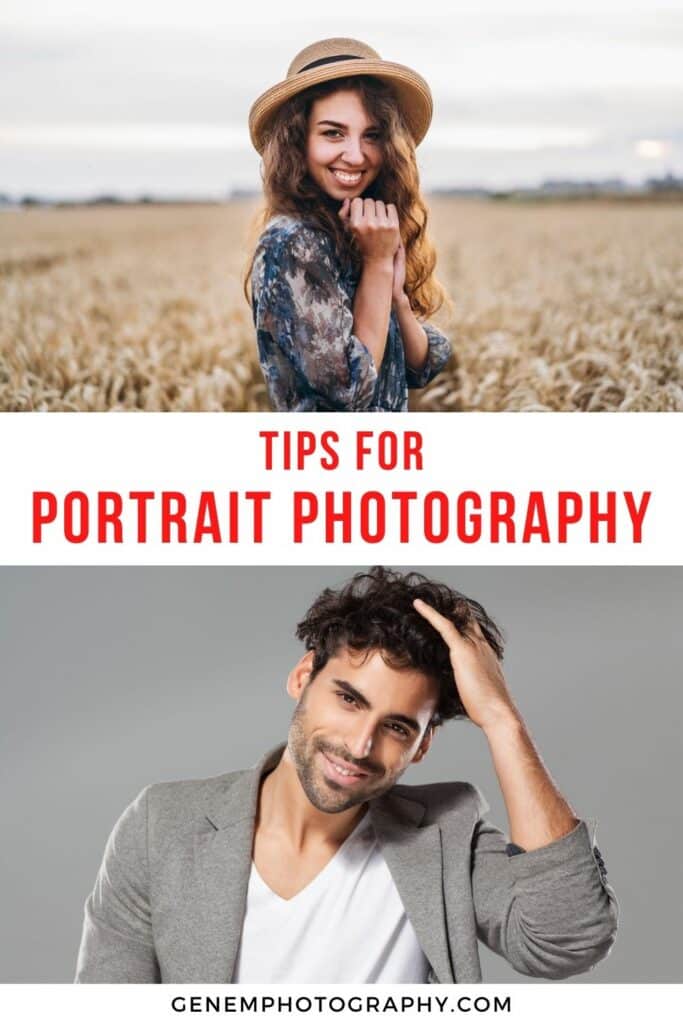
Read more about Photography Tips:


